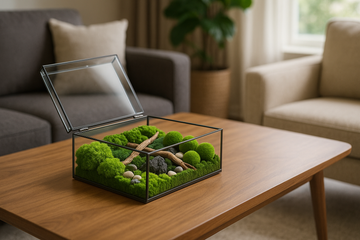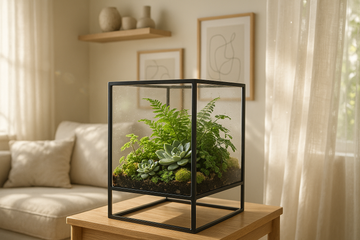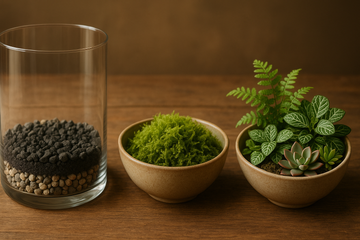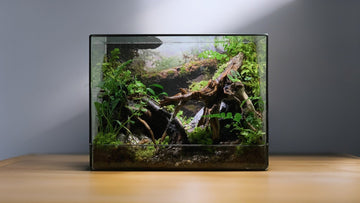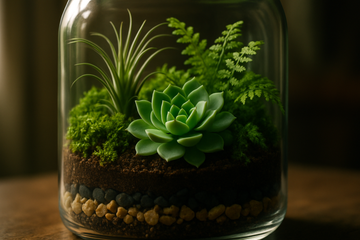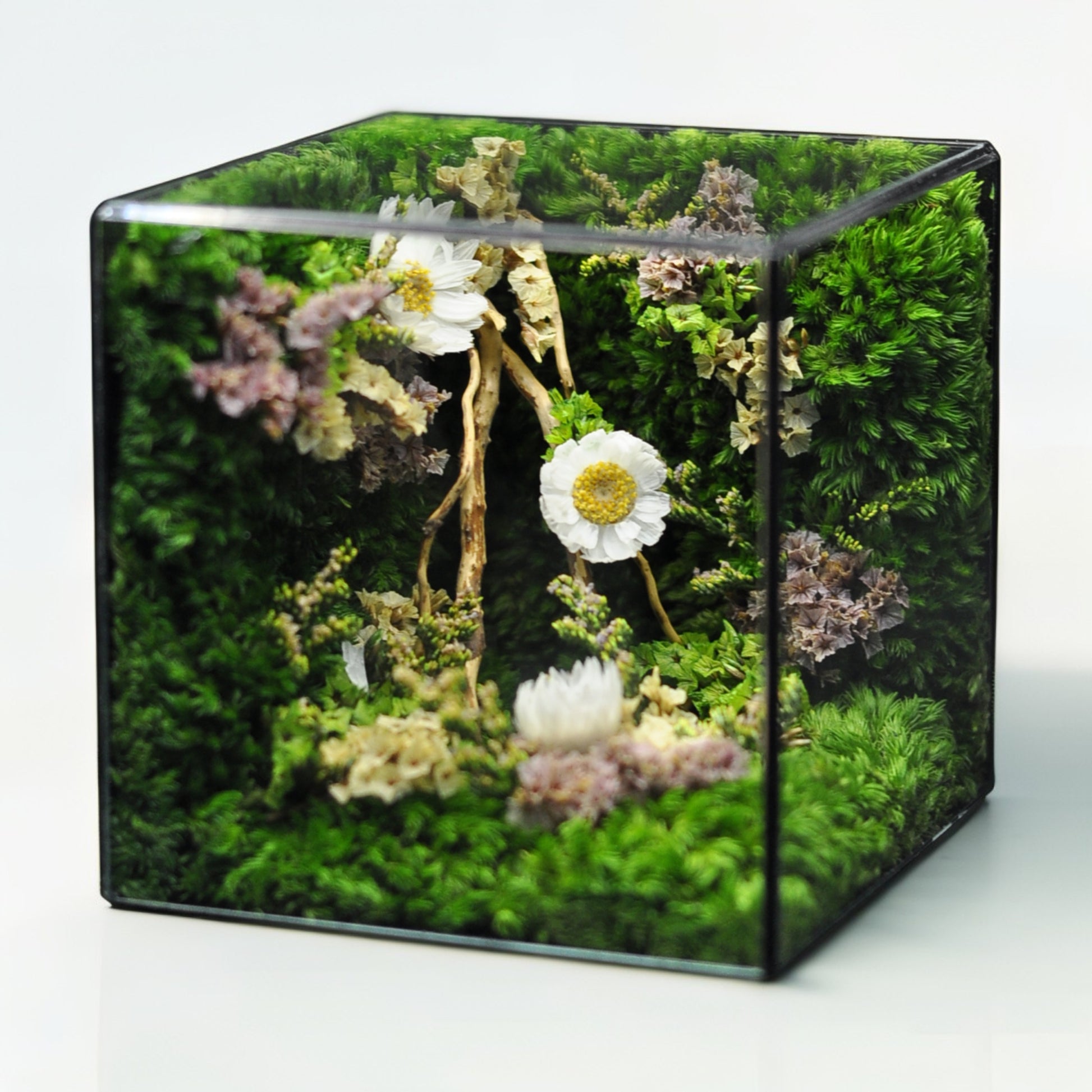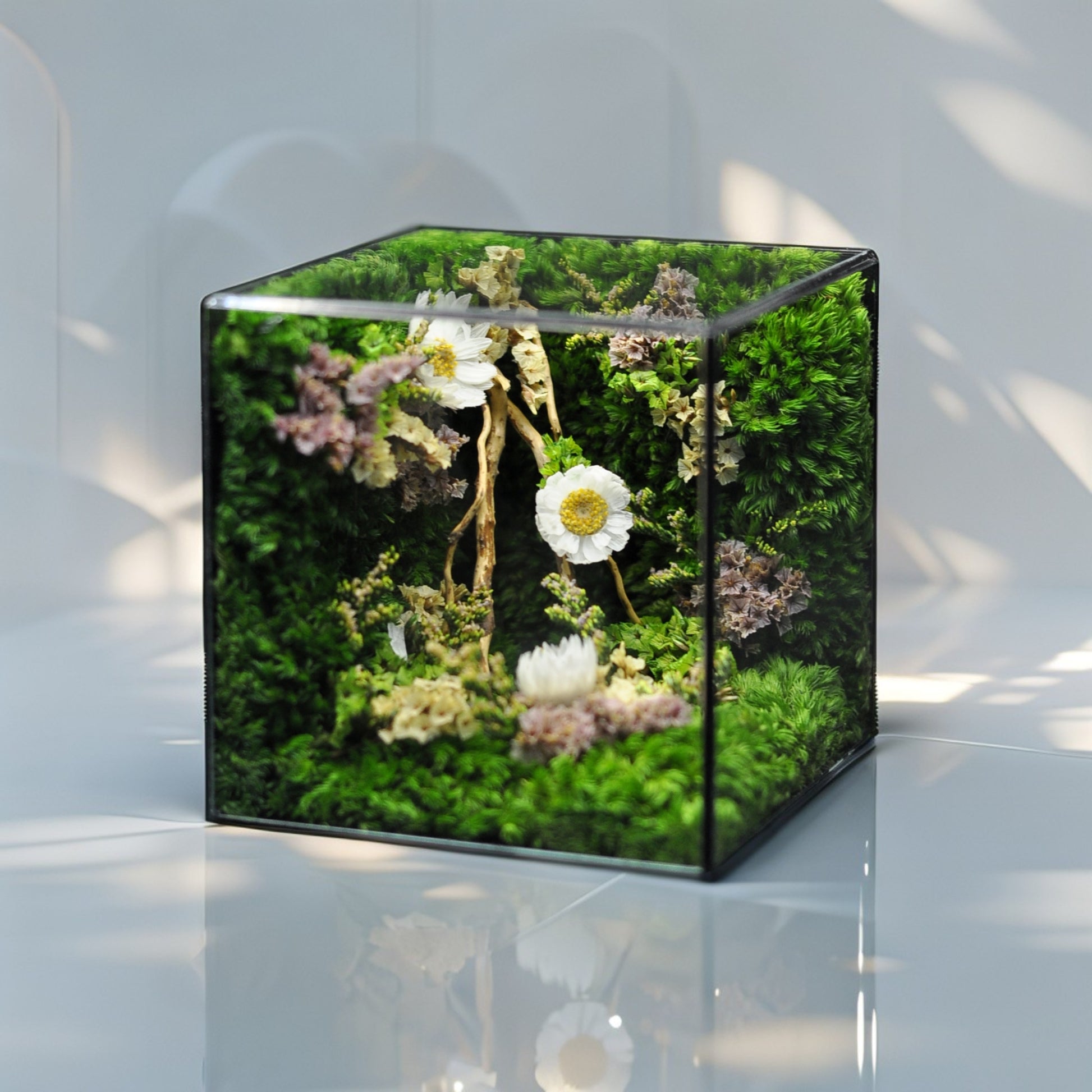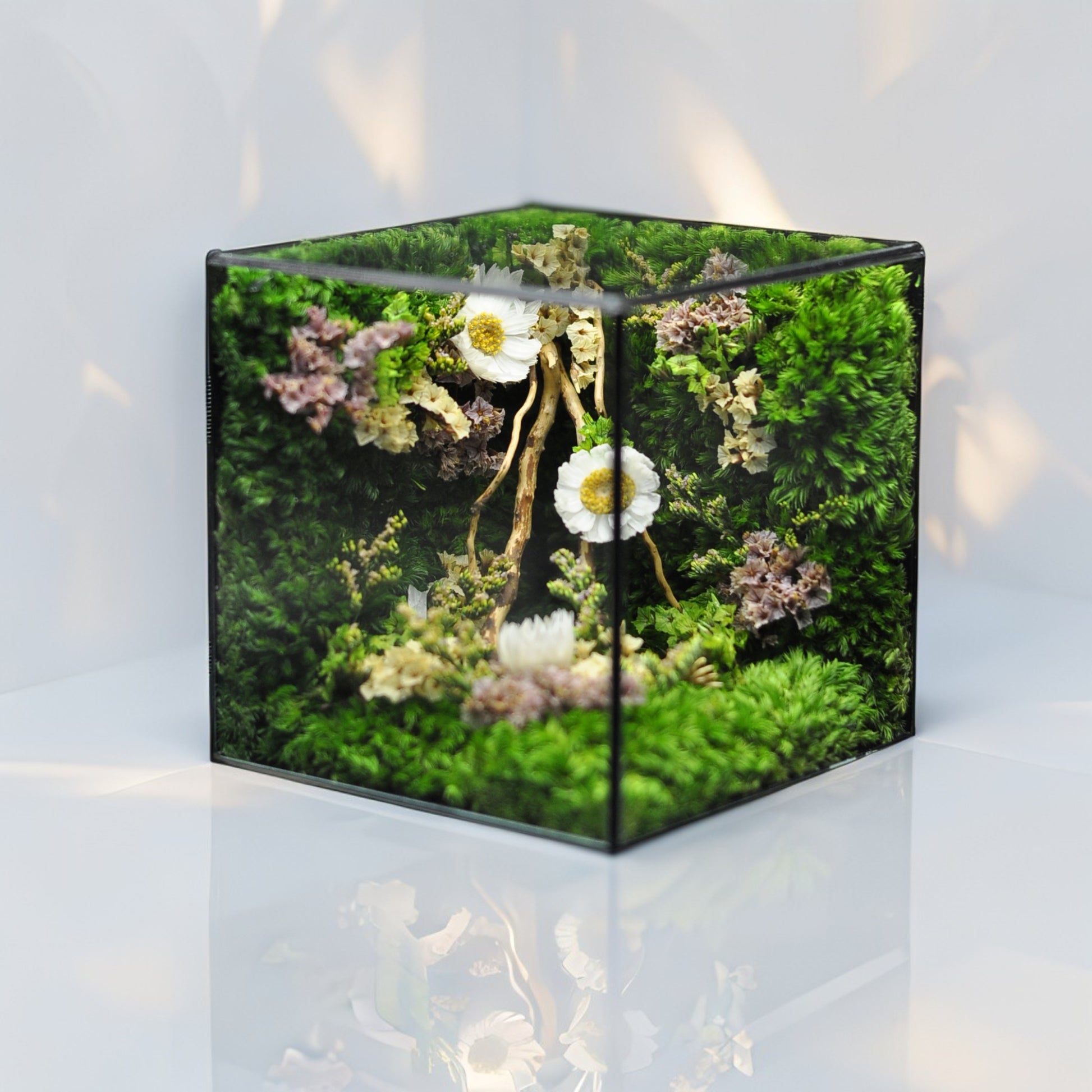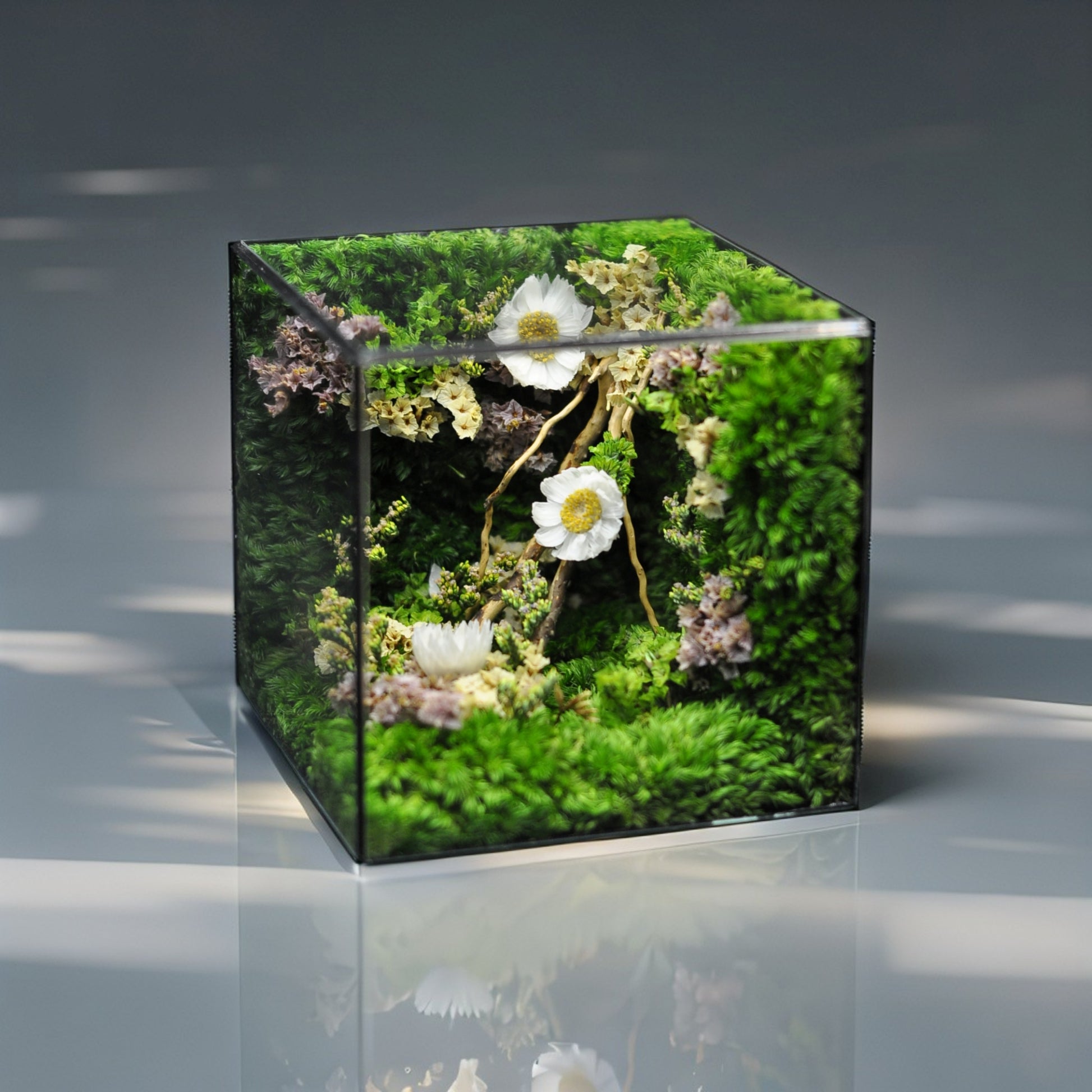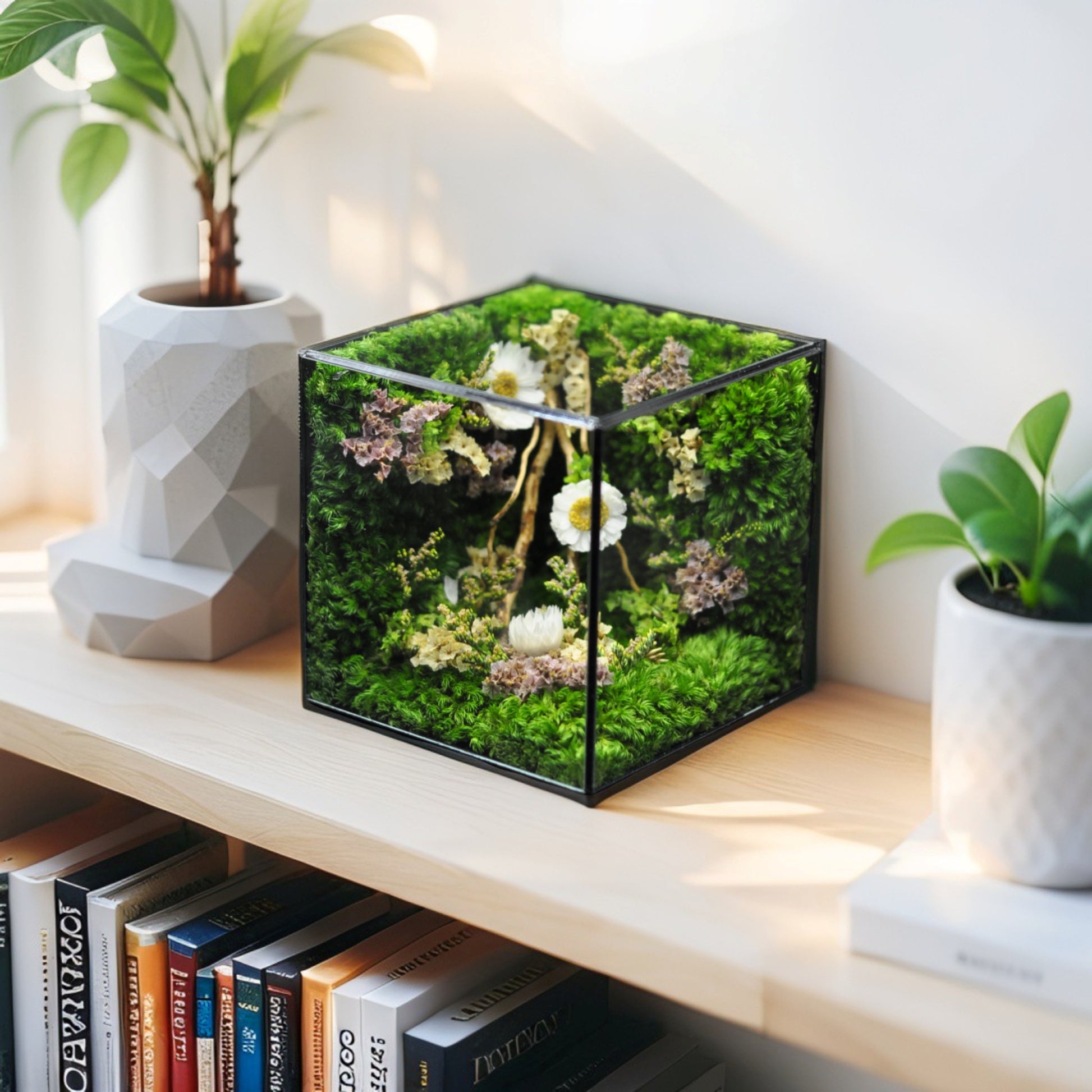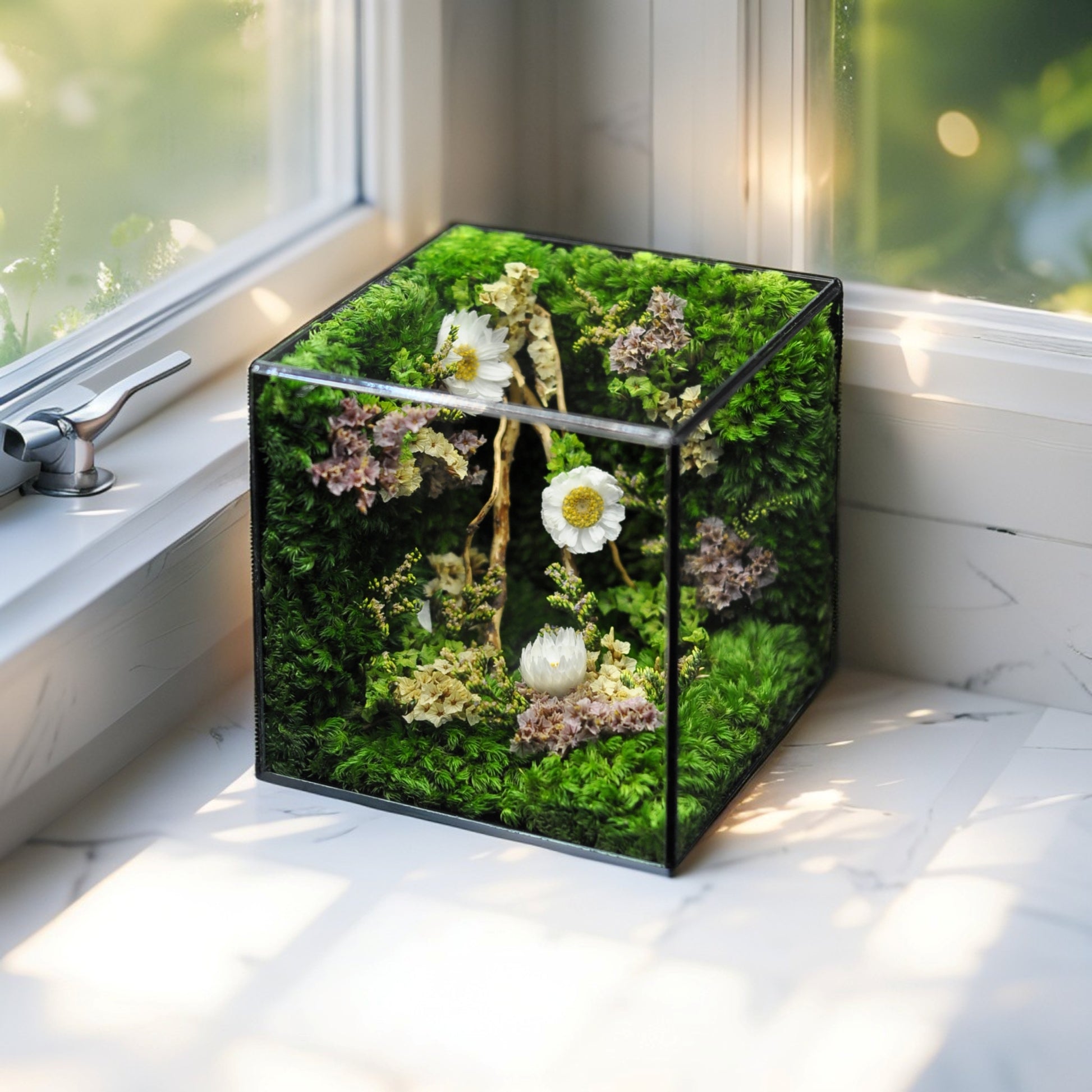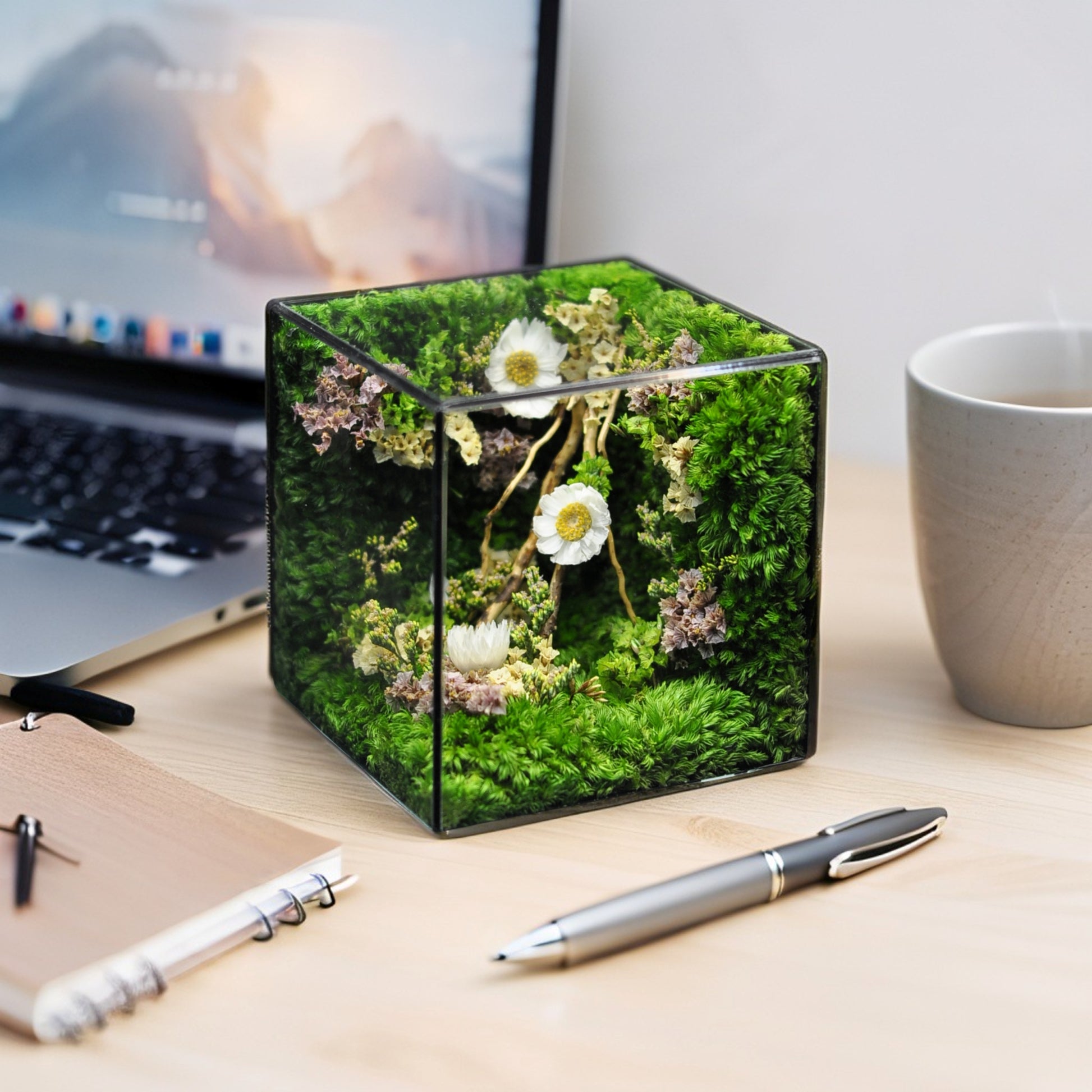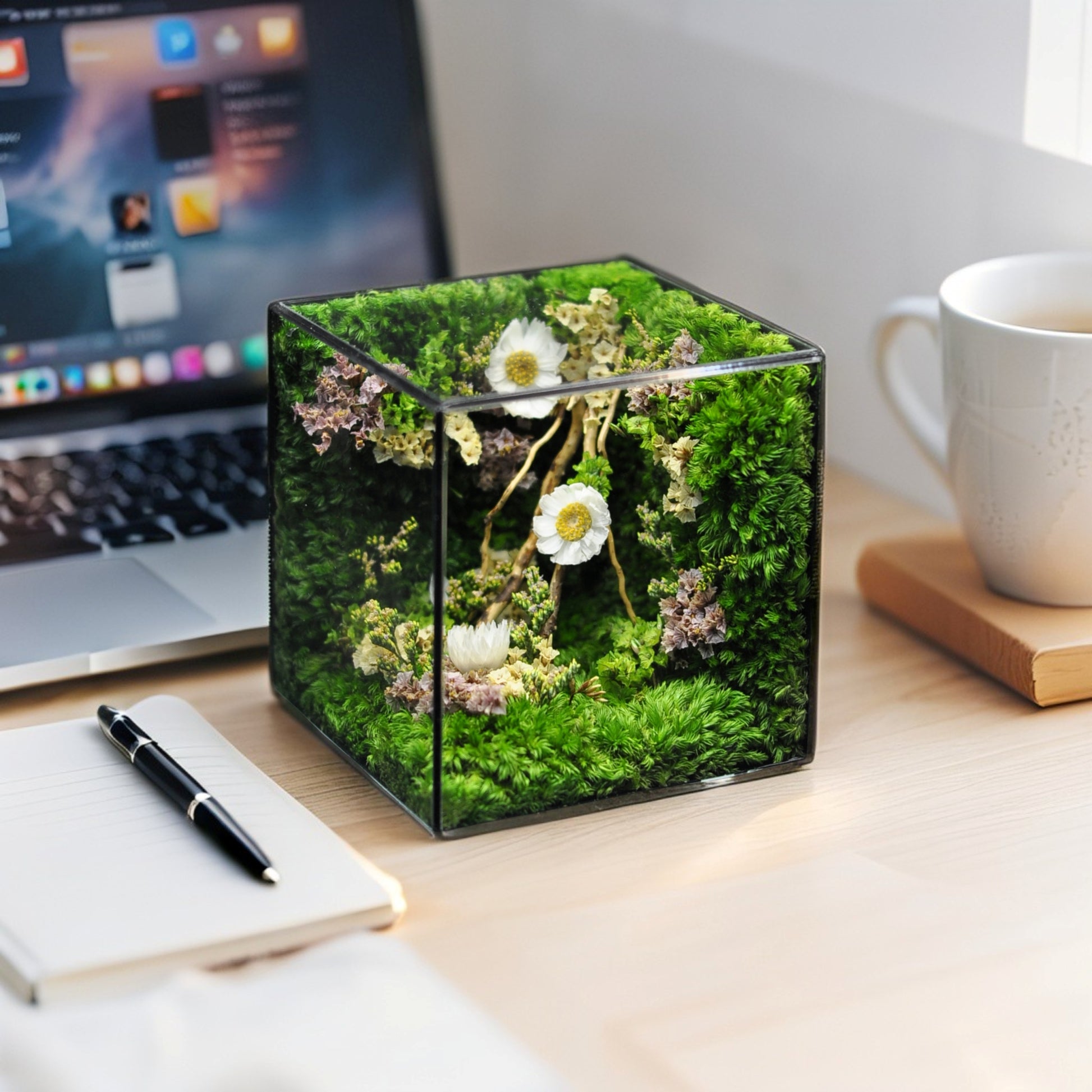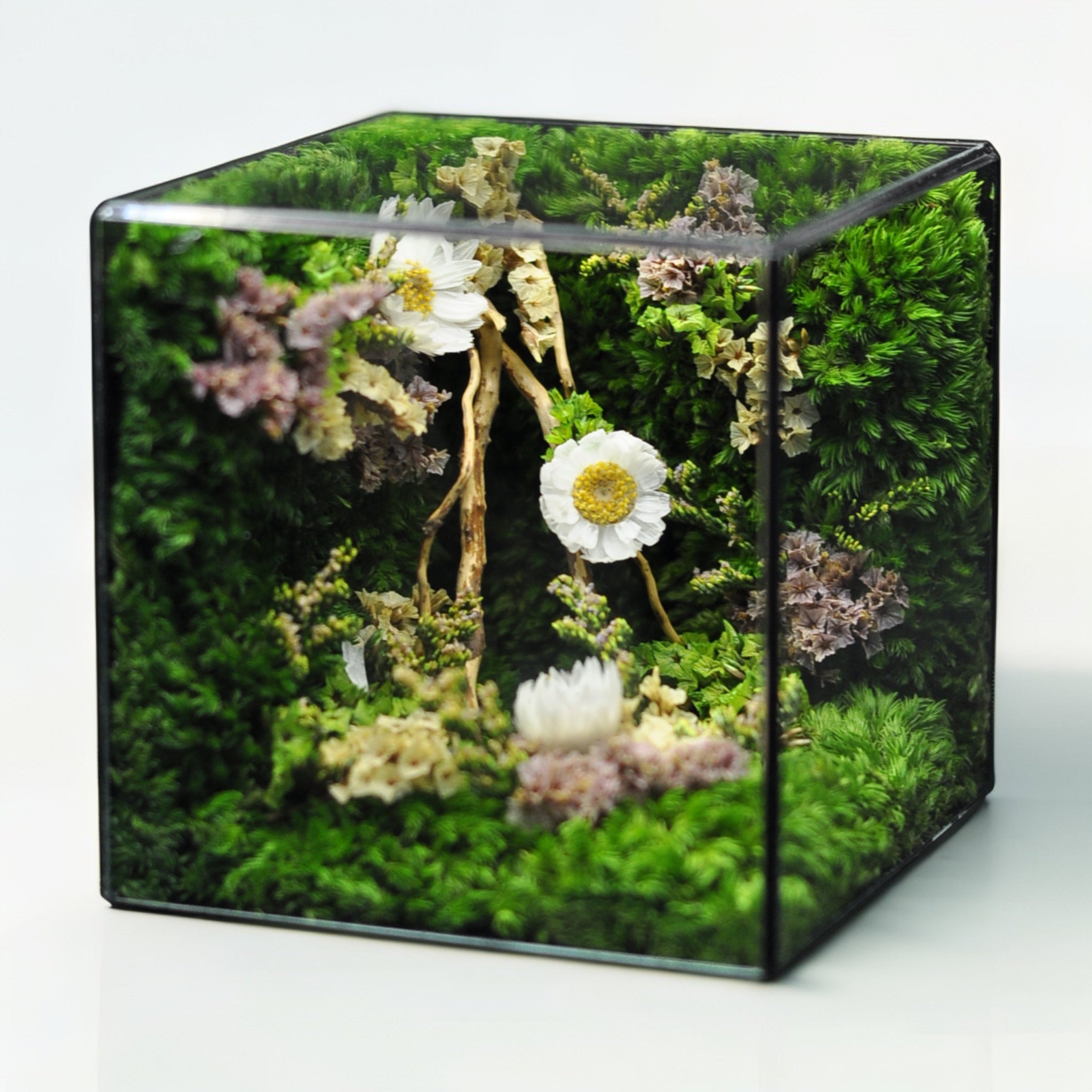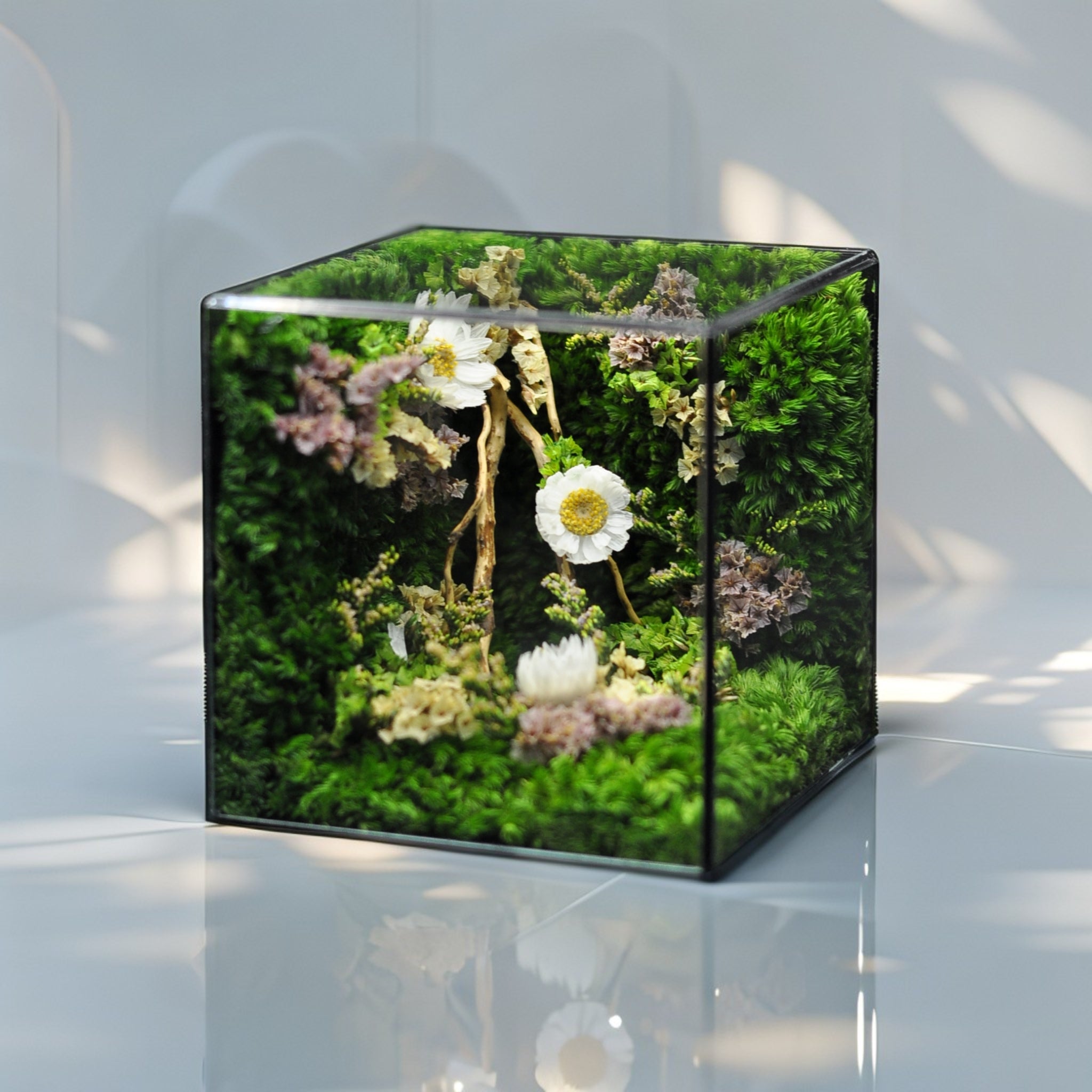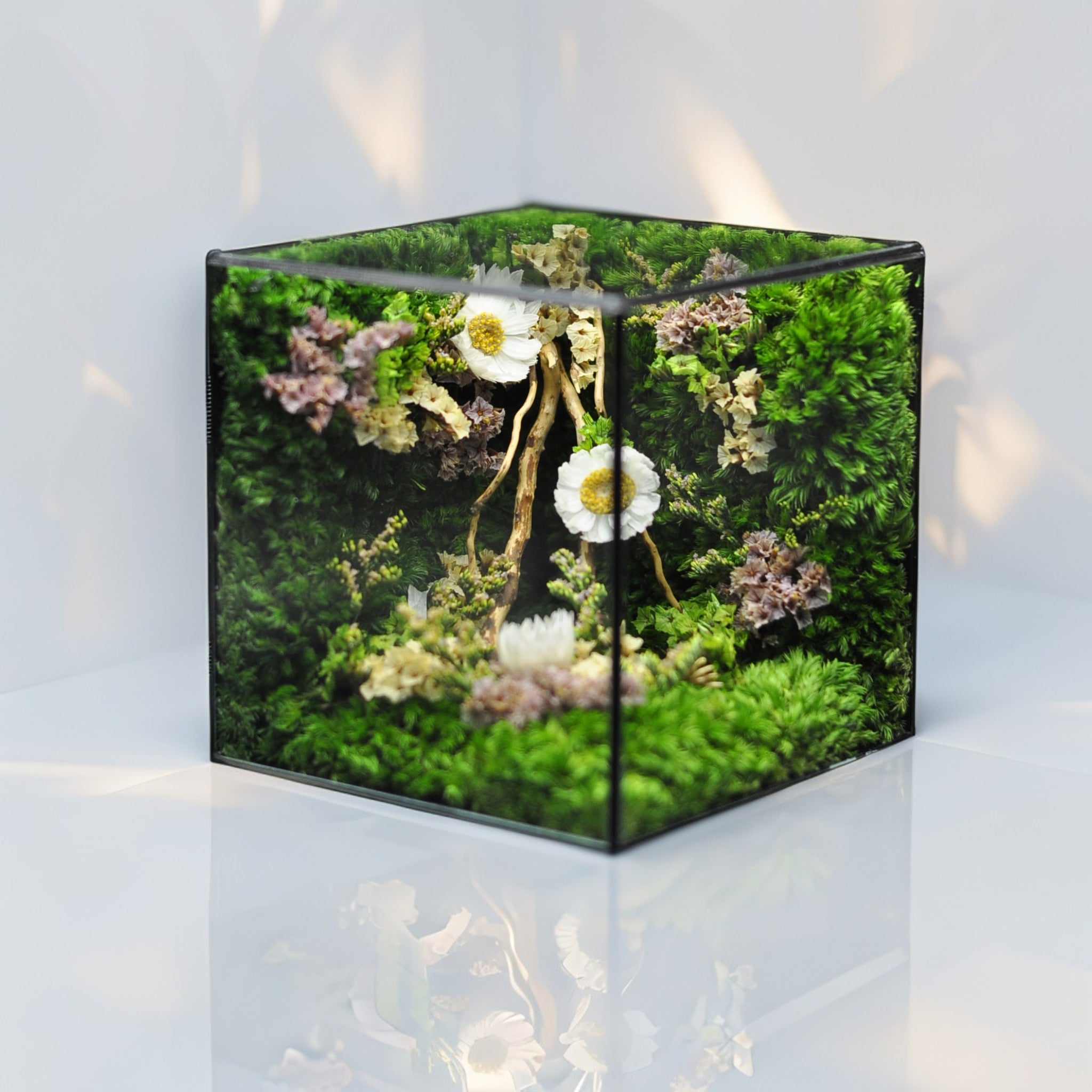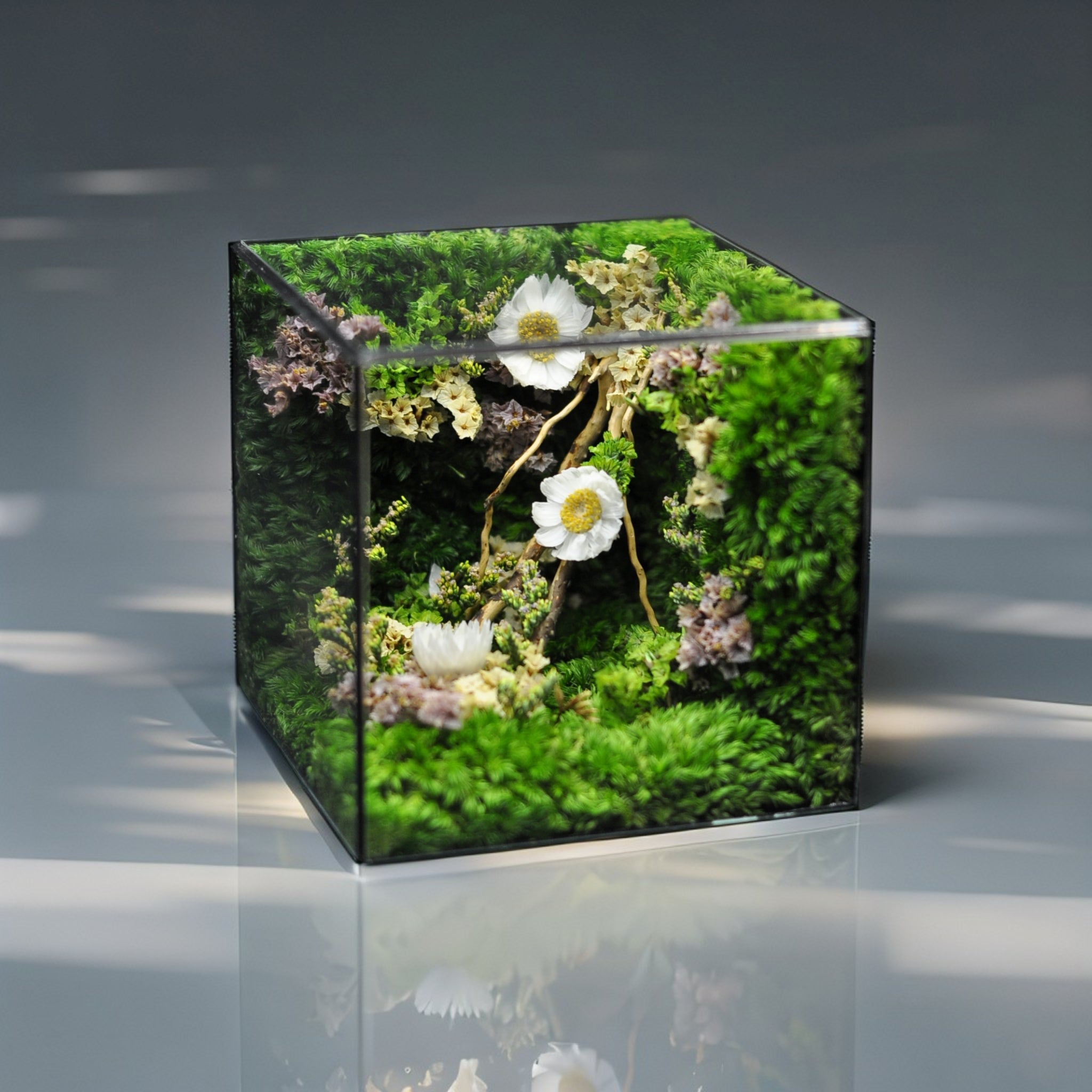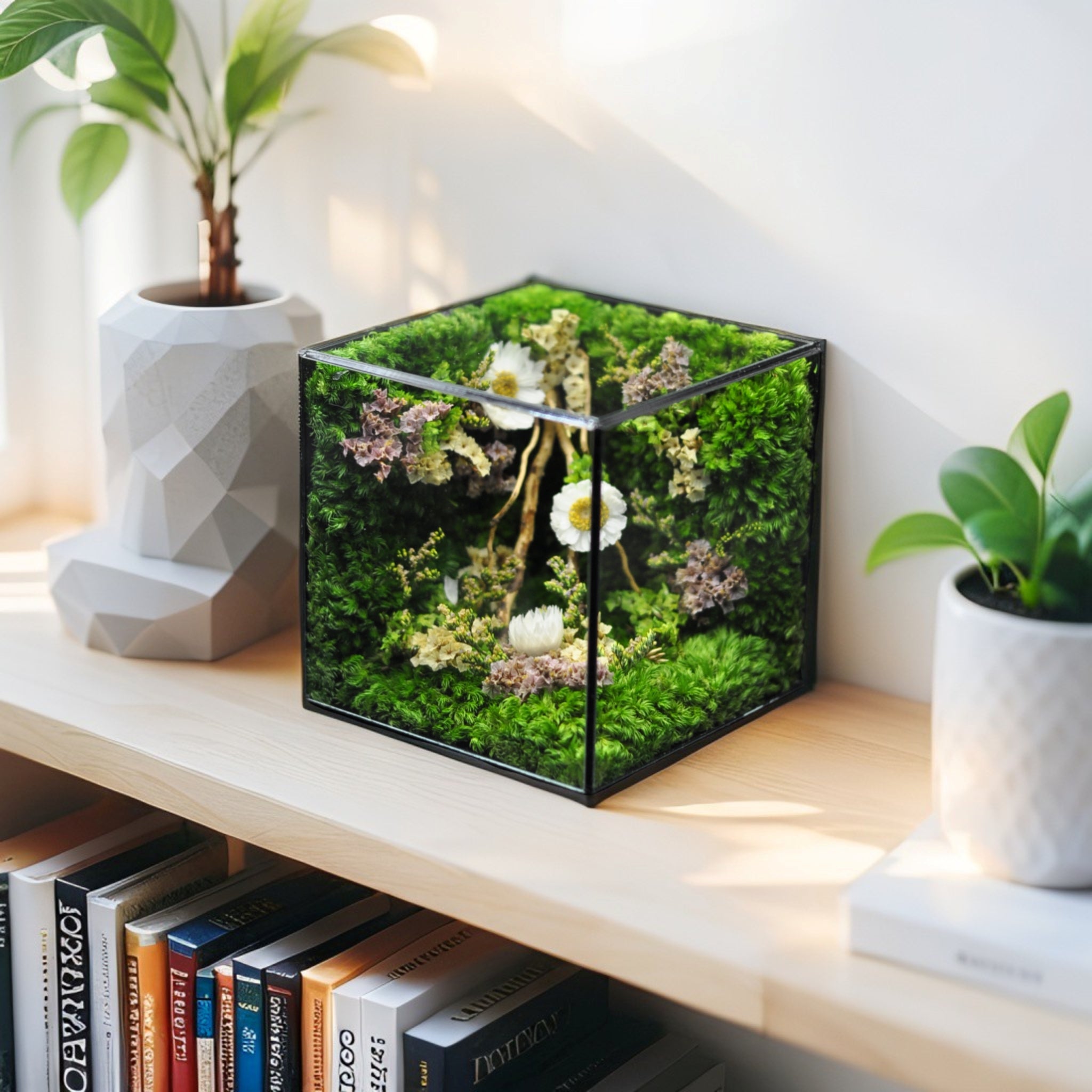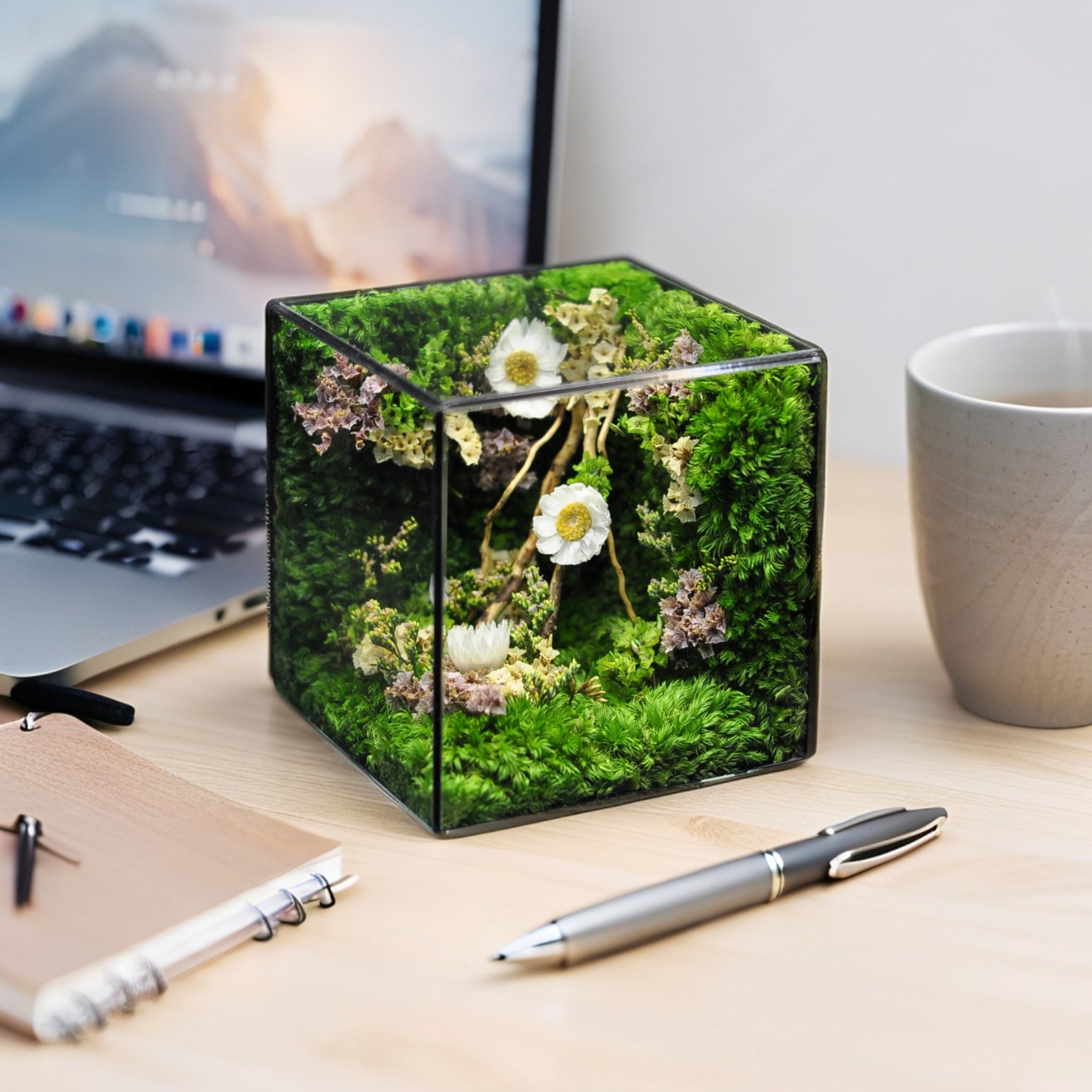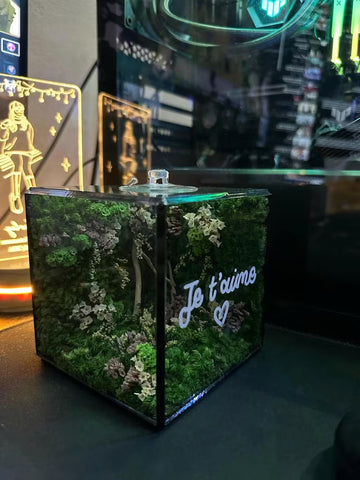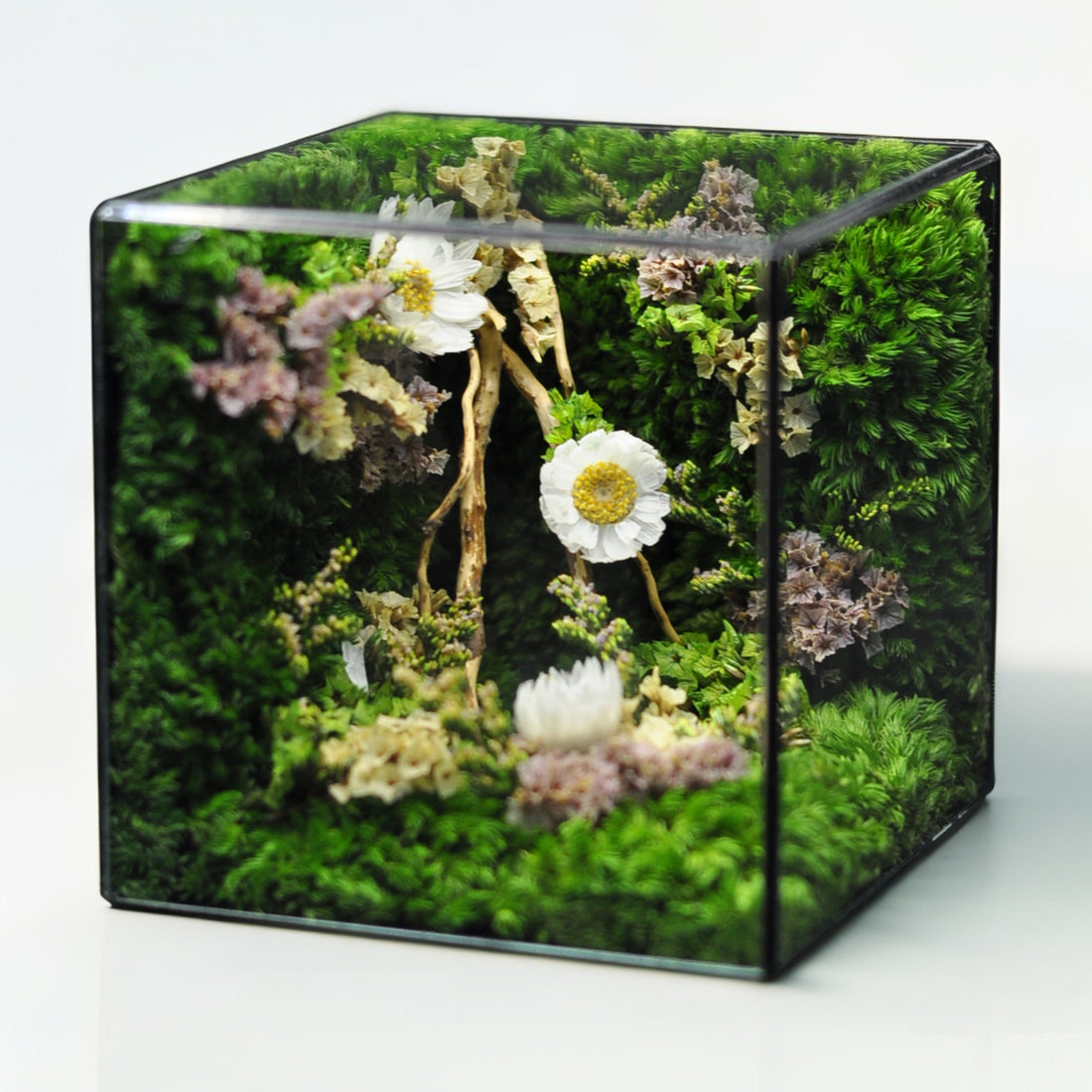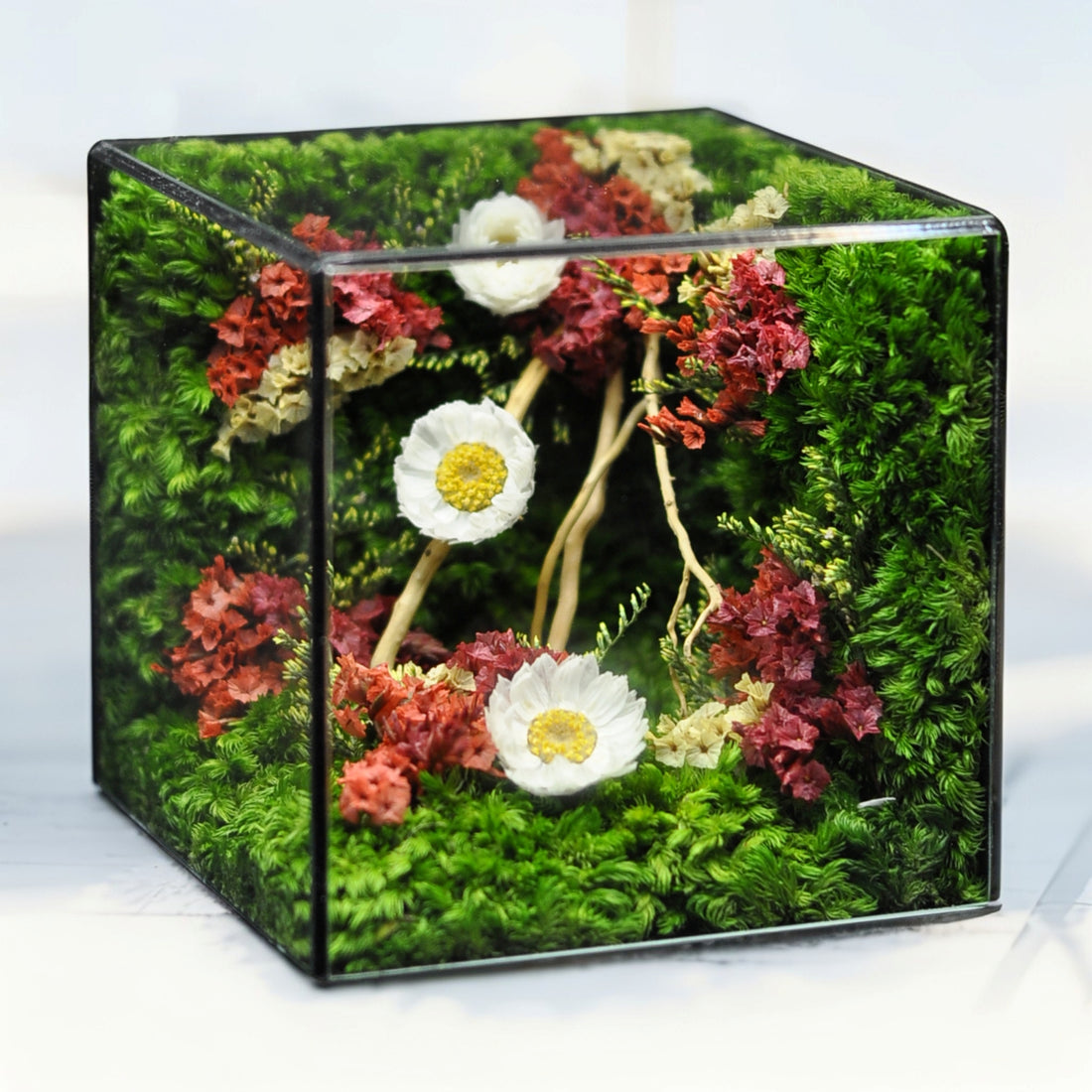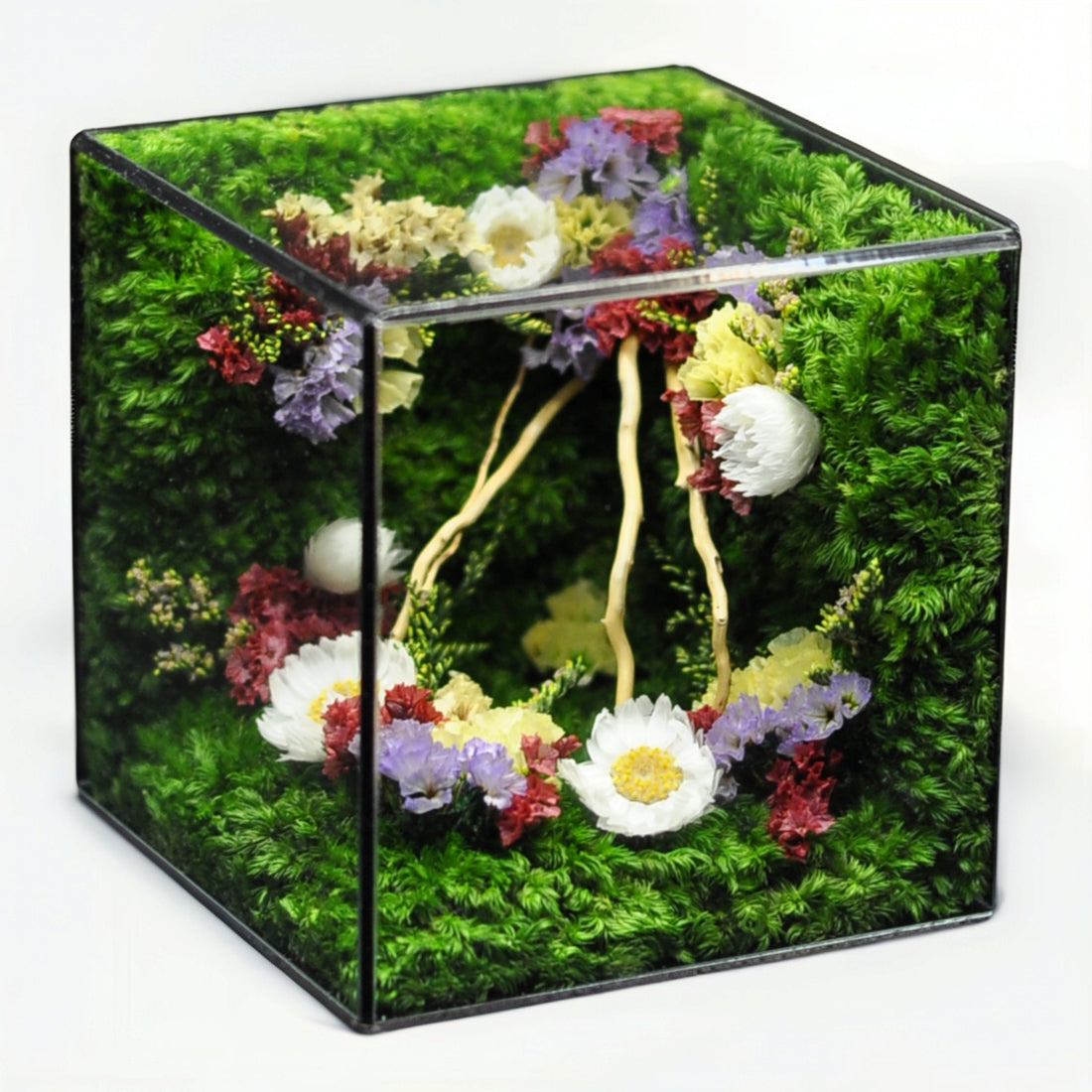Key Takeaways
Explore how to choose the perfect preserved moss terrarium kit, assemble it step by step, and style it to complement any interior. These key takeaways highlight expert tips, brand comparisons, moss varieties, and maintenance tricks to help you create a vibrant, low-maintenance display that suits your décor.
- Compare kits by brand, price & contents: Evaluate leading preserved moss terrarium kits side by side—contents, cost ranges, and quality—to pinpoint the best value for your budget.
- Match your décor with tailored styling tips: Adapt your terrarium to modern minimalist, boho-chic, rustic farmhouse, or urban industrial themes through curated moss placements, color palettes, and container shapes.
- Choose the right moss variety for texture and color: Select reindeer, sheet, or ball moss based on desired texture, color stability, and arrangement flexibility to achieve your ideal look.
- Master assembly with clear, step-by-step guidance: Layer substrate, position moss, and seal the terrarium effectively—our concise process ensures a flawless build every time.
- Weigh pros & cons for confident decisions: Understand preserved moss benefits like zero watering and year-round greenery versus limitations such as humidity sensitivity to confirm it fits your environment.
- Maintain lasting vibrancy with minimal care: Preserve moss color and form by avoiding direct sun, controlling indoor humidity, and gently dusting to keep your display fresh.
- Elevate depth with complementary accents: Use driftwood, stones, or small air plants alongside preserved moss to introduce contrast and visual interest.
- Fill the content gap with detailed comparisons & styling frameworks: Leverage our in-depth brand, price, and kit-contents analysis plus décor-specific styling guides to navigate beyond generic DIY advice.
With these insights in hand, you’re ready to dive into our comprehensive guide on purchasing, assembling, and styling preserved moss terrarium kits—transforming any space into a lush, worry-free oasis.
Introduction
Did you know that a beautifully arranged terrarium can bring a touch of nature indoors without the need for constant upkeep? Preserved moss terrariums are the perfect blend of aesthetic charm and low-maintenance care, providing year-round greenery that complements any living space.
In this ultimate guide, you'll learn how to choose the right preserved moss terrarium kit, assemble it flawlessly, and style it in line with your home décor—whether you lean towards modern minimalism, boho chic, or rustic farmhouse vibes. From in-depth comparisons of various brands to expert tips on moss varieties and maintenance tricks, this article equips you with everything you need to create a vibrant, worry-free oasis in your home. Get ready to transform your space with preserved moss terrariums that not only look stunning but also thrive with minimal effort.
Benefits and Drawbacks of Preserved Moss Terrariums
Preserved moss terrariums bring lush, emerald-green beauty into your home without the fuss of soil, watering, or pruning. These living sculptures offer a zero-maintenance greenery solution that stays vibrant year-round.
Benefits of Preserved Moss Terrariums
-
Zero watering and year-round greenery
No watering. No wilting. All wow. Stabilized with food-grade glycerin, preserved moss stays soft and vivid without soil moisture. -
Low maintenance vs. live moss terrariums
Unlike live moss that needs humidity and light monitoring, preserved varieties resist moisture-driven dust adhesion and require almost no care—ideal for busy lifestyles.
Pro Tip: Lightly mist your tweezers with rubbing alcohol before use to prevent water spots on glass.
Drawbacks and Limitations
-
Humidity sensitivity and color fading risks
Excess humidity in sealed containers can trap moisture and trigger mold. Direct UV exposure accelerates dye fade, so avoid windows and harsh lights. -
Static growth: no dynamic plant development
Preserved moss remains in its current form forever. There’s no seasonal change or new shoots, so your design is fixed until you refresh or replace elements.
Pro Tip: Rotate sealed terrariums weekly to ensure even light exposure and minimize fading.
Can I Use Preserved Moss in a Sealed Terrarium?
Yes. Sealed terrariums keep out dust, stabilize humidity, and showcase your preserved moss with minimal air exchange. Glycerin-based preservation inhibits mold, but it’s wise to open the lid briefly once a month to release any condensation.
Types of Preserved Moss and Selecting the Right Variety
Now that we’ve weighed the pros and cons, let’s explore the most popular preserved moss types—and how to choose the best one for your décor vision.
Reindeer Moss: Texture, Color Stability & Styling (reindeer moss)
Reindeer moss has a spongy, cloud-like structure and comes in rich emerald or pastel-dyed hues. Its cushiony form adds volume and visual interest.
- Best for: Volume focal points in open terrariums or wall panels.
- Care note: Tolerates gentle handling but avoid heavy pressure.
Pro Tip: Use a soft-bristled brush to fluff reindeer moss back to its original shape after transit.
Sheet Moss: Coverage, Versatility & Aesthetic (sheet moss)
Sheet moss offers a flat, carpet-like mat perfect for uniform base layers or moss walls. Its smooth texture highlights other accents and prevents substrate from shifting.
- Best for: Minimalist designs and clean-edge layouts.
- Care note: Press firmly to bond with the substrate layer without tearing.
Pro Tip: Cut sheet moss with scissors to fit curves or geometric outlines precisely.
Ball Moss: Volume, Flexibility & Placement (ball moss)
Ball moss features small, round clumps resembling miniature shrubs. It retains shape well and adds three-dimensional contrast.
- Best for: “Moss boulders” and small-scale mound effects.
- Care note: Place on sturdy substrate; ball moss won’t spread but holds firm.
Pro Tip: Cluster 3–5 ball moss clumps in odd-number groupings for a natural look.
Matching Moss Variety to Your Décor Goals
Choose moss types based on texture, scale, and color harmony:
- Minimalist spaces: Sheet moss in uniform emerald or soft gray shades.
- Boho settings: Mix reindeer and ball moss with colorful accents.
- Rustic interiors: Combine ball moss with natural bark chips and pinecones.
- Industrial themes: Contrast dark steel or concrete vessels with bright green reindeer moss.
Pro Tip: Test moss samples against your wall paint and textiles to ensure color compatibility.
How to Choose the Best Preserved Moss Terrarium Kit
With so many kits on the market, it helps to know what truly matters. Unlike DIY tutorials, this guide compares top commercial kits by brand, price, and style to help you pick the best preserved moss terrarium kit for your space.
What to Consider When Buying a Preserved Moss Terrarium Kit
- Kit size and layout: Match terrarium dimensions to your display area—desktop kits differ from hanging or wall-mounted designs.
- Moss quantity and variety: Look for kits offering multiple moss types if you want textural contrast.
- Container quality: Prioritize borosilicate glass, airtight seals, or mesh lids for ventilation.
- Preservation standards: Ensure dyes are UV-resistant and non-toxic, and that glycerin stabilization is food-grade.
- Accent pieces: Check for driftwood, stones, charcoal, and tools (tweezers, brushes) included.
Pro Tip: Read packaging labels for “non-toxic glycerin” and “UV-resistant colorfast dyes” to avoid fading or off-gassing.
Comparing Best Preserved Moss Terrarium Kits by Brand, Price & Contents
To help you choose, we’ve surveyed three popular kits across entry-level to premium price points.
MossMaster Pro Kit (≈$45)
- Includes 250 g reindeer moss, 150 g sheet moss, 75 g ball moss, activated charcoal, drainage stones, decorative pebbles, tweezers, and brushes.
- Container: 6" borosilicate glass orb with removable cork lid.
- Expert Insight: Scored 4.5/5 for moss quality and container durability (Moss Lovers Magazine, 2023).
- Case Study: Sarah, a New York apartment dweller, reported the kit maintained color vibrancy in low light for 18 months.
GreenScape Deluxe Kit (≈$55)
- Includes 200 g mixed moss blend, river stones, activated charcoal filter pad, driftwood accent, micro rake, sealing dome.
- Container: Wide-mouth hurricane glass with airtight silicone seal.
- Data Point: Over 90% satisfaction among urban apartment buyers in a 2022 brand survey.
EcoMoss Starter Pack (≈$30)
- Includes 150 g sheet moss, 100 g reindeer moss, 50 g ball moss, bark chips, metal display tray.
- Container: Matte-black steel planter (may show oxidation if water residues remain against the metal).
- Budget pick: Swap to a glass vessel for sealed displays.
Quality Indicators: Mesh ventilation, food-grade preservatives, sturdy container seals, clear instructions, and included styling tools.
Pro Tip: Choose a kit with a moss weight of at least 300 g total for a fuller look in medium-sized terrariums.
Where to Buy Preserved Moss Terrarium Kits for the Best Value
Find the best deals and selection at:
- Online Marketplaces: Amazon, Etsy shops like MossMasterOfficial and EcoMossCo.
- Direct Brand Sites: GreenScape’s official website often runs seasonal discounts.
- Specialty Garden Centers: Local terrarium or hydroponic stores may carry exclusive kit lines.
- Home Décor Boutiques: Curated gift shops sometimes stock limited-edition terrarium sets.
Pro Tip: Sign up for newsletters from top brands to receive discount codes and early access to new releases.
Step-by-Step Assembly Guide for Preserved Moss Terrarium Kits
Ready to bring your kit to life? Here’s how to assemble a preserved moss terrarium kit step by step.
Preparing Your Workspace and Materials (how to assemble a preserved moss terrarium kit)
- Lay down newspaper or a silicone mat to catch debris.
- Gather gloves, tweezers, a soft brush, and all kit components.
- Clean and dry your container thoroughly—no water spots.
Pro Tip: Warm tweezers between your fingers for a few seconds to prevent cold-induced condensation on glass.
Layering Substrate and Drainage Components
- Drainage layer: 1–2 cm of gravel or pebbles for air pockets.
- Charcoal layer: 0.5 cm of activated charcoal to filter impurities.
- Substrate layer: Fine sphagnum peat or potting mix blended with sand for stability.
Positioning and Securing Your Moss Without Disturbance
- Place sheet moss flat on the substrate and press gently.
- Pinch and position reindeer moss clumps with tweezers for height.
- Use small, natural bamboo pins or tiny dots of non-toxic craft glue behind ball moss to hold it against vertical surfaces.
Pro Tip: Work from the back forward to avoid brushing moss aside as you layer.
Adding Complementary Accents: Driftwood, Stones & Small Air Plants
- Tuck driftwood or stones near moss focal points for contrast.
- Place hardy air plants (Tillandsia) in open designs—avoid direct contact with preserved moss to prevent moisture transfer.
- Arrange accents in odd-number groupings (3–5) for a balanced look.
Pro Tip: Insert miniature figures or crystals for a whimsical touch that complements your décor theme.
Sealing Your Terrarium for Longevity
- Sealed display: Ensure the lid gasket sits evenly to lock in humidity. Open monthly to release excess moisture.
- Open display: Leave the container off for full ventilation—ideal in drier rooms and to avoid mold.
Pro Tip: After sealing, wipe the glass inside and out with a microfiber cloth to remove fingerprints and dust.
Styling Your Preserved Moss Terrarium for Any Interior
Want to make your preserved moss terrarium a true décor statement? Choose a styling approach that matches your space.
Modern Minimalist Styling Tips with Preserved Moss Terrariums
Craving clean lines and calm vibes?
- Container: Clear geometric glass cube or cylinder.
- Accents: White sand or pale gravel beneath sheet moss.
- Palette: Monochrome greens with a single polished river stone.
Pro Tip: Place on a floating shelf against a white wall to enhance the minimalist effect.
Boho-Chic Decor: Natural Textures & Warm Color Palettes
Looking for laid-back layers and bohemian flair?
- Container: Rustic clay bowl or hanging orb with macramé.
- Accents: Colorful crystals, driftwood, and small feathers.
- Texture mix: Pair reindeer moss with ball moss for depth.
Pro Tip: Hang near woven wall art to amplify boho charm.
Rustic Farmhouse Vibes: Earthy Containers & Vintage Accents
Longing for cozy country warmth?
- Container: Stone or reclaimed wood trough.
- Accents: Bark chips, mini pinecones, and twine wraps.
- Pairings: Vintage metal lanterns or terracotta pottery.
Pro Tip: Add a small chalkboard sign with a nature quote for extra farmhouse flair.
Urban Industrial Approach: Sleek Lines & Bold Contrasts
Want gritty urban edge with green relief?
- Container: Matte-black steel planter or concrete vessel.
- Accents: Geometric metal pieces, raw stone slabs.
- Contrast: Bright green moss against dark, industrial materials.
Pro Tip: Place on a metal shelving unit or concrete-topped console to complete the industrial look.
How to Style a Preserved Moss Terrarium
Regardless of theme, follow these styling best practices:
- Balance textures and heights.
- Use odd-number groupings for natural appeal.
- Contrast moss colors with container and accent materials.
- Keep a focal point—driftwood, stone, or sculptural moss mound.
Pro Tip: Step back and view from different angles to ensure harmony in 360° designs.
Maintenance Tips to Preserve Moss Color and Form
With minimal upkeep, preserved moss terrariums can stay fresh for years. Follow these care tips to maintain their beauty.
Ideal Lighting and Placement: Avoid Direct Sun
- Place in bright, indirect light—east- or north-facing windows work best.
- Avoid midday sun, which causes rapid dye fade.
Indoor Humidity Control for Preserved Moss Terrariums
- Aim for 40–60% ambient humidity.
- In dry climates, use a nearby humidifier; in damp rooms, open the lid occasionally to prevent buildup.
Cleaning and Gentle Dusting Techniques
- Use a soft brush or compressed air duster to remove surface dust.
- Gently wipe glass exteriors with a microfiber cloth; never soak moss.
Pro Tip: Schedule light dusting every 2–3 months to keep your terrarium looking pristine.
How to Care for and Maintain a Preserved Moss Terrarium
Preserved moss won’t grow or absorb water. Your routine: keep it out of direct sun, manage room humidity, and dust gently. Refresh accents annually to renew the display as colors mature.
Expert Insights, Data & Case Studies
To help you make the best choice and styling decisions, here are real-world insights and professional tips.
Customer Reviews and Satisfaction Data on Top Kits
- MossMaster Pro Kit: 4.5/5 average in Moss Lovers Magazine’s 2023 review.
- GreenScape Deluxe Kit: 92% user satisfaction in a 2022 survey of urban apartment dwellers.
- EcoMoss Starter Pack: Praised for affordability, with 85% repurchase intent among beginner enthusiasts.
Real-World Before & After Styling Examples
- Sarah’s NYC Loft: Before—a bare bookshelf. After—MossMaster orb terrarium with driftwood accent brightened the space, earning 5⭐ reviews from guests over 14 months.
- Studio Apartment Makeover: A GreenScape sealed dome transformed a north-facing windowsill into a lush focal point, reducing dust buildup and adding a calming green glow.
Expert Tips to Maximize Longevity and Aesthetic Appeal
- Use food-grade glycerin-stabilized moss for lasting pliability.
- Opt for UV-resistant, non-toxic dyes to prevent rapid fading.
- Rotate sealed terrariums monthly to avoid uneven sun exposure.
- Refresh accent elements (stones, driftwood) annually to maintain design interest.
Pro Tip: If dust accumulates inside sealed jars, briefly open the lid and use a microfiber cloth on interior surfaces.
Weighing Pros & Cons for a Worry-Free Green Display
Recap of Advantages: Low Maintenance, Aesthetic Flexibility & Cost Savings
- Water-free, maintenance-light décor option.
- Versatile texture and color for any interior theme.
- Long-term display (up to 5 years) with minimal upkeep.
Recap of Limitations: Environmental Sensitivities & Static Growth
- Susceptible to color fade under UV and mold in high humidity.
- No new growth—design remains fixed unless refreshed.
- Initial investment higher than live DIY setups, though cost-effective over time.
With this guide, you have everything you need to choose, assemble, style, and maintain your preserved moss terrarium like a pro. Enjoy hassle-free greenery that elevates your décor for years to come.
Conclusion
Preserved moss terrariums embody a unique blend of aesthetic appeal and practical convenience, allowing individuals to incorporate vibrant greenery into their spaces without the upkeep associated with live plants. As highlighted, these zero-maintenance wonders maintain their beauty year-round while offering a versatile foundation for diverse styling choices, from minimalist to boho-chic setups.
However, potential buyers should consider the limitations, such as humidity sensitivity and fixed design characteristics, to ensure their terrarium remains a flourishing focal point in their interior. By choosing the right moss type, understanding environmental needs, and following maintenance tips outlined, you can maximize the longevity and visual impact of your terrarium.
In a world where green spaces often feel distant, preserved moss terrariums provide an accessible solution. As you embark on creating your own, reflect on how this blend of nature and art can transform your living space—what stories and tranquility will your moss terrarium bring to your environment?
Frequently Asked Questions (FAQ)
Q: Can I use preserved moss in a sealed terrarium?
A: Yes. Sealed terrariums keep out dust and stabilize humidity, and glycerin-based preservation inhibits mold. It’s best to open the lid briefly once a month to release any condensation.
Q: What should I consider when buying a preserved moss terrarium kit?
A: Look at kit size and layout for your display area; moss quantity and variety for textural contrast; container quality (borosilicate glass, airtight seals, or mesh lids); preservation standards (food-grade glycerin, UV-resistant non-toxic dyes); and included accent pieces and tools like driftwood, stones, tweezers, and brushes.
Q: How do I care for and maintain a preserved moss terrarium?
A: Keep it in bright, indirect light (avoid direct sun), maintain ambient humidity around 40–60% (open sealed lids occasionally), dust the moss gently every 2–3 months with a soft brush or compressed air, wipe glass with a microfiber cloth, and refresh accent elements annually.
Q: What are the main types of preserved moss and their ideal uses?
A: Reindeer moss—spongy clumps for volume focal points; sheet moss—flat mats for uniform base layers or walls; ball moss—small, round clumps for “moss boulders” and three-dimensional contrast. Each type is chosen for its texture, shape, and styling role.
Q: What are the basic steps to assemble a preserved moss terrarium kit?
A: Clean and dry your container, then layer 1–2 cm gravel for drainage, 0.5 cm activated charcoal, and your substrate mix. Press sheet moss flat, position reindeer moss clumps with tweezers, secure ball moss with tiny pins or non-toxic craft glue, add driftwood or stones, then seal or leave open per your design.
Q: What interior decor themes work well with preserved moss terrariums?
A: Modern minimalist—clear geometric glass, white sand, monochrome greens; boho-chic—macramé hangers, crystals, driftwood with mixed moss; rustic farmhouse—wood or stone troughs, bark chips, pinecones, twine; urban industrial—matte-black or concrete containers, metal accents, bright green reindeer moss.
Q: Where can I buy preserved moss terrarium kits for the best value?
A: Online marketplaces like Amazon or Etsy (e.g., MossMasterOfficial, EcoMossCo), direct brand sites (GreenScape), specialty garden centers, and home décor boutiques. Signing up for brand newsletters can also yield discount codes.

